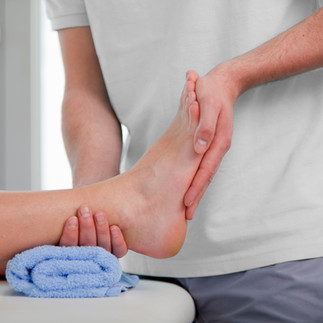Plantar Fasciitis: Understanding and Treating the Nagging Heel Pain
- David Polomie

- Jul 14, 2023
- 3 min read
Foot pain can be an incredibly frustrating and debilitating condition, affecting our ability to walk, run, or even stand comfortably. One common ailment that causes such discomfort is plantar fasciitis. This condition is often characterized by sharp pain in the heel and bottom of the foot, particularly in the morning or after prolonged periods of inactivity. However, with proper understanding and treatment, individuals suffering from plantar fasciitis can find relief and restore their mobility.
Plantar fasciitis occurs when the plantar fascia, a thick band of tissue that runs along the bottom of the foot, becomes inflamed or irritated. The plantar fascia connects the heel bone to the toes and acts as a shock absorber, supporting the arch of the foot. When subjected to excessive stress or strain, it can develop tiny tears, leading to irritation and inflammation.
Several factors can contribute to the development of plantar fasciitis. The most common causes include overuse or repetitive strain on the heel, particularly in individuals engaged in activities involving prolonged standing, walking, or running. Poor foot mechanics, such as overly flat feet, high arches, or an abnormal walking pattern, can also increase the risk. Other factors, such as obesity, tight calf muscles, and wearing inappropriate footwear lacking proper arch support, can aggravate the condition.
If you suspect you have plantar fasciitis, it is crucial to consult a medical professional for an accurate diagnosis and personalized treatment plan. However, there are several self-care approaches that can alleviate symptoms and expedite recovery.
1. Rest and ice: Initially, it is essential to reduce or modify any activities that intensify the pain. Applying ice to the affected area for about 15-20 minutes multiple times a day can help reduce inflammation.
2. Stretching exercises: Regularly performing stretching exercises targeting the calf muscles and the plantar fascia can help improve flexibility and reduce pain. Simple exercises include calf stretches against a wall or using a towel to pull the toes towards the body.
3. Supportive footwear: Investing in proper footwear with appropriate arch support and cushioning can significantly alleviate symptoms. Additionally, considering shoe inserts or custom orthotics prescribed by a podiatrist can provide further support and alignment.
4. Night splints: Wearing a night splint, which keeps the foot and calf in a stretched position while sleeping, can help lengthen the plantar fascia and Achilles tendon, reducing morning pain and stiffness.
5. Physical therapy: A physical therapist can help devise a comprehensive rehabilitation plan, utilizing techniques such as massage, ultrasound, or electrical stimulation to relieve pain and promote healing. They may also guide you through tailored strengthening and stretching exercises.
6. Medications and injections: Over-the-counter nonsteroidal anti-inflammatory drugs (NSAIDs) like ibuprofen can temporarily reduce inflammation and pain. In more severe cases, corticosteroid injections administered by a medical professional may be recommended.
Remember, patience is crucial when dealing with plantar fasciitis as it can take weeks or months to fully recover. It is vital to follow the recommended treatment plan consistently and modify activities that exacerbate the pain. In rare cases where conservative measures fail to provide relief, surgical intervention may be considered.
Plantar fasciitis need not be a lifelong limitation. By understanding the condition and adopting appropriate treatment strategies, individuals can effectively manage the pain, regain their foot health, and once again enjoy their favorite activities without limitation. Always consult with a healthcare professional for personalized advice before engaging in any treatment plan.


















Comments